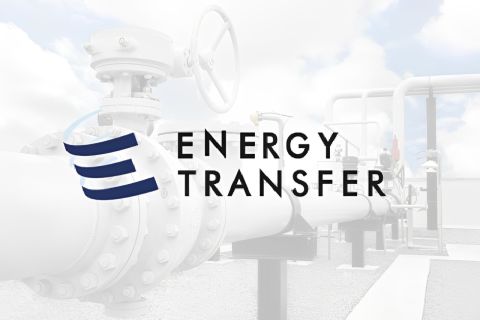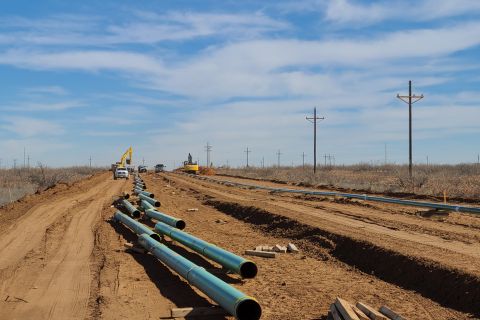
Canada is rolling as recent acquisitions and potential investments of $60 billion signal it’s the place to be for national and international oil companies, said Asit Sen, director of integrated oils and major producers at Dahlman Rose & Co.
“Canada is open for business,” he said.
Last month, takeovers by Chevron and ExxonMobil in Canada worth about $20 billion were approved by regulators. And the country’s ties with Asian economies continue to strengthen, though not without concern.
Since China-owned CNOOC acquired Nexen and Malaysia's state-owned Petronas took over Progress Energy, new guidelines fortify scrutiny of future transactions, Sen said.
“The debate surrounding the Asian takeovers tested Canada's ability to balance the need to bolster closer economic relations with key Asian economies without letting them gain too much influence,” he continued.
But Canada is opening up to new markets as US liquids production continues to grow, he emphasized. Currently, Canada exports about 2 million barrels of oil per day (MMb/d) to the United States.
The International Energy Agency (IEA) predicts that North America could be a net oil exporter by 2030 with US crude oil output reaching 11.1 MMb/d from 8.1 MMb/d.
Canada has also positioned itself to be competitive globally as interest intensifies in parts of Africa, Argentina, China, Australia, Russia, and Kurdistan. Canadian policies continue to allow foreign state participants to form joint ventures and take minority stakes in the oil sands while pursuing majority deals elsewhere in the petroleum sector. Foreign private-sector participants should consider the investment climate essentially unchanged, Sen said.
“In coming years, we expect energy-hungry national oil companies to remain interested in Canada,” he added.
Major oil companies will remain opportunistic in North America and Sen said he expects "bolt on" transactions, a type of merger or acquisition that easily fits within a corporation.
Chevron and ExxonMobil have expressed interested in mostly asset level bolt-on transactions in North America, he continued.
In late December, Chevron agreed to buy a 50% interest in Kitimat LNG, which he estimated will result in as much as $28 billion in project capital costs. ExxonMobil announced it would go ahead with the Hebron Oil project offshore Newfoundland. Capital costs are $14 billion.
Canada is also trying to support an LNG export sector on its Pacific Coast, he continued.
“Kitimat is one of the several proposed LNG export terminals in Western Canada, but is one of the two that has secured export licenses” from the National Energy Board, Sen said.
Sen expects competition to heat up even more in North America after the US firms up its liquefied natural gas (LNG) export policies. In December, a US Department of Energy study found the nation has the capacity to export 10 Bcf/d.
However, the question of US LNG exports remains unresolved, chiefly because of politics.
And in Australia, LNG projects continue to be hampered by soaring costs. Australia is poised to be the world’s largest LNG exporter by 2016 but overruns, including a whopping 40% blowout to $52 billion at Chevron’s Gorgon LNG project, “remain worrisome,” Sen said.
Still, the mere idea of North American LNG exports is having an impact in Asia.
Much of the Cheniere Energy Inc. Sabine Pass facility output is expected to head to Asia. Prices will be tied to Henry Hub, which would be “a seismic shift for Asian LNG buyers used to decades of oil-indexation,” Sen said.
And despite worries about the global economy, worldwide LNG demand has increased faster than conventional gas during the past three years. Asia accounts for more than 60% of the incremental demand.
“This trend is expected to continue with spot LNG prices in Asia currently averaging $17.40 per million Btu, or roughly five times the current US Henry Hub spot price of $3.30,” he noted. “Asian buyers will be likely to continue to jockey for more flexibility in pricing mechanism.”
Contact the author, Darren Barbee, at dbarbee@hartenergy.com.
Recommended Reading
TMX Crude Quality May Hamper Flows from Canada to US West Coast
2024-06-12 - Companies and industry associations including Canadian Natural Resources Ltd, Chevron and refiner Valero Energy have written to the Canada Energy Regulator (CER) to complain about high vapor pressure limits on the Trans Mountain pipeline.
Enterprise Targets FID for SPOT Project by End of 2024
2024-05-01 - Enterprise Products Partners’ co-CEO disputed capex figures reported in the media regarding its Sea Port Oil Export Terminal.
Deal Change: BANGL Stake No Longer Part of Energy Transfer’s WTG Merger
2024-06-26 - NGL production in Texas is following a growth trend as it recovers from COVID-19, and the BANGL Pipeline's joint venture partners want in.
Same Game, Fewer Players: Midstream M&A Stands Apart from E&P Sector
2024-07-15 - The midstream M&A market typically follows the E&P sector by a few months. But some aspects of the market are different this time around.



